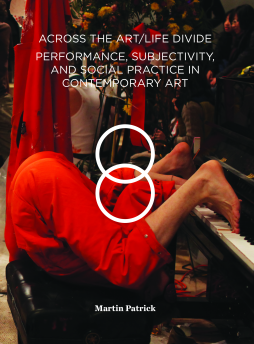
Additional Information
Book Details
Abstract
Martin Patrick explores the ways in which contemporary artists across media continue to reinvent art that straddles both public and private spheres. Examining the impact of various art movements on notions of performance, authorship, and identity, Across the Art/Life Divide argues that the most defining feature of contemporary art is the ongoing interest of artists in the problematic relationship between art and life. Looking at under-examined forms, such as stand-up comedy and sketch shows, alongside more traditional artistic media, he situates the work of a wide range of contemporary artists to ask: To what extent are artists presenting themselves? And does the portrayal of the “self” in art necessarily constitute authenticity? By dissecting the meta-conditions and contexts surrounding the production of art, whether aesthetic or conceptual, social or political, Across the Art/Life Divide examines how ordinary, everyday life is transformed into art.
Across the Art/Life Divide offers both an overview of performative practices and a theory connecting this work to political movements. Patrick addresses aspects of this history by exploring interconnected modes of conceptualizing art — as process, happening, or flux — and his understanding of how the artists’ self presentational strategies relate to the political siting and affects of their work is groundbreaking. The book is a crucial read for anyone interested in understanding the relationship between innovations in the very concept of what art is in the contemporary period and politically motivated concerns around identity and structures of power in the art world.
Amelia G. Jones, Robert A. Day Professor of Art and Design, USC Roski School of Art and Design, University of Southern California
Table of Contents
| Section Title | Page | Action | Price |
|---|---|---|---|
| Cover | Cover | ||
| Half Title | i | ||
| Copyright | ii | ||
| Title | iii | ||
| Contents | v | ||
| Introduction | 1 | ||
| Chapter One: Art and How to Live It: Artists Performing Themselves (and Others) | 9 | ||
| Chapter Two: Unfinished Filliou: On the Fluxus Ethos, Origins of Relational Aesthetics, and the Potential for a Non-Movement in Art | 41 | ||
| Chapter Three: Autobiographical Voices and Entangled Identities: On Monologues and Memoirs; Comedians, Celebrity, and Camouflage | 67 | ||
| Chapter Four:Intervals, Moments, and Events: Performative Tactics and the Reinvention of Public Space | 91 | ||
| Chapter Five: Reenactments, Remixing, and Restaging the Contemporary | 117 | ||
| Chapter Six:Social Practices and the Shifting Discourse: On Collaborative Strategies and “Curating the Social” | 143 | ||
| Chapter Seven: Emergent Notions of Subjectivity and Authorship: How Might We Occupy the Present? | 173 | ||
| Acknowledgements | 197 | ||
| Notes | 201 | ||
| Bibliography | 221 | ||
| INDEX | 235 | ||
| Back Cover | Back Cover |
